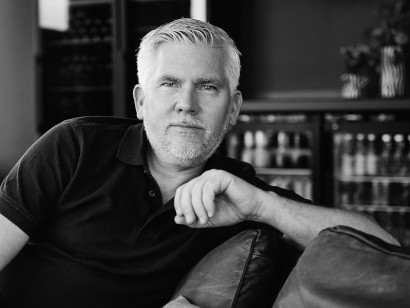Culture and the Work Experience
Michael Schmutzer’s Vision On The Future of Work
360 spoke with Michael Schmutzer about the new role of the physical workspace and how to make the office more resilient.
360 spoke with Michael Schmutzer about the new role of the physical workspace and how to make the office more resilient.
The pandemic has drastically changed the way we work, and it is not over yet. At Design Offices, we acted early, already in May, we were certified by the B.A.D. (Occupational Health and Safety and Occupational Health Care) for a safe working environment. Three aspects have changed: the physical workspace has a new meaning, becoming a social environment - a place where we meet. Second, there’s a stronger desire for exclusivity; our customers prefer smaller venues and a space choose by purpose and function, which is reflected by the ambiance.
Finally, the aspect of flexibility; this aspect is an excellent opportunity for the coworking industry. Companies save fixed costs and have the chance to try out different working scenarios without significant investments.



Generally, workplaces range from corporate offices, corporate coworking offices to working from home, and the public office (e.g., cafés) — all made possible through digitalization and technological developments. However, the more dominant digital becomes, the stronger our need for personal exchange and analog encounters will be. We need colleagues, we want collaboration, and we want working environments with high quality, privacy and exclusivity. At Design Offices we developed two new products in recent months: the "DO Member" membership program and "Work Loft,” an exclusive rental concept for companies that need more space.
Our home is our home, not a professional work environment. Some might have a fully-equipped den with functioning technology and ergonomics, but these are exceptions. Usually, working from home decreases productivity. In the last months, we learned that working from home works for focused work, but we need social interaction as humans for collaboration. Before, many of us thought that we could only work at the company's headquarters, preferably from 8:00 a.m. to 5:00 p.m. and under the supervisor's watchful eye. That point of view changed as well.

I believe the workplace has to adjust to the assignment and not vice versa. Additionally, we offer our employees a combination of working from home and corporate coworking at our 40 locations as a flexible module. This mix creates flexibility and motivation. A few years ago, I read in a study that wellbeing at work increases productivity by 60%. At that time, the term "wellbeing ambiance" meant light, air, and acoustics. Now I add the interaction with colleagues. We want to work with other people and develop ideas together; then, we are satisfied, and new ideas arise.
